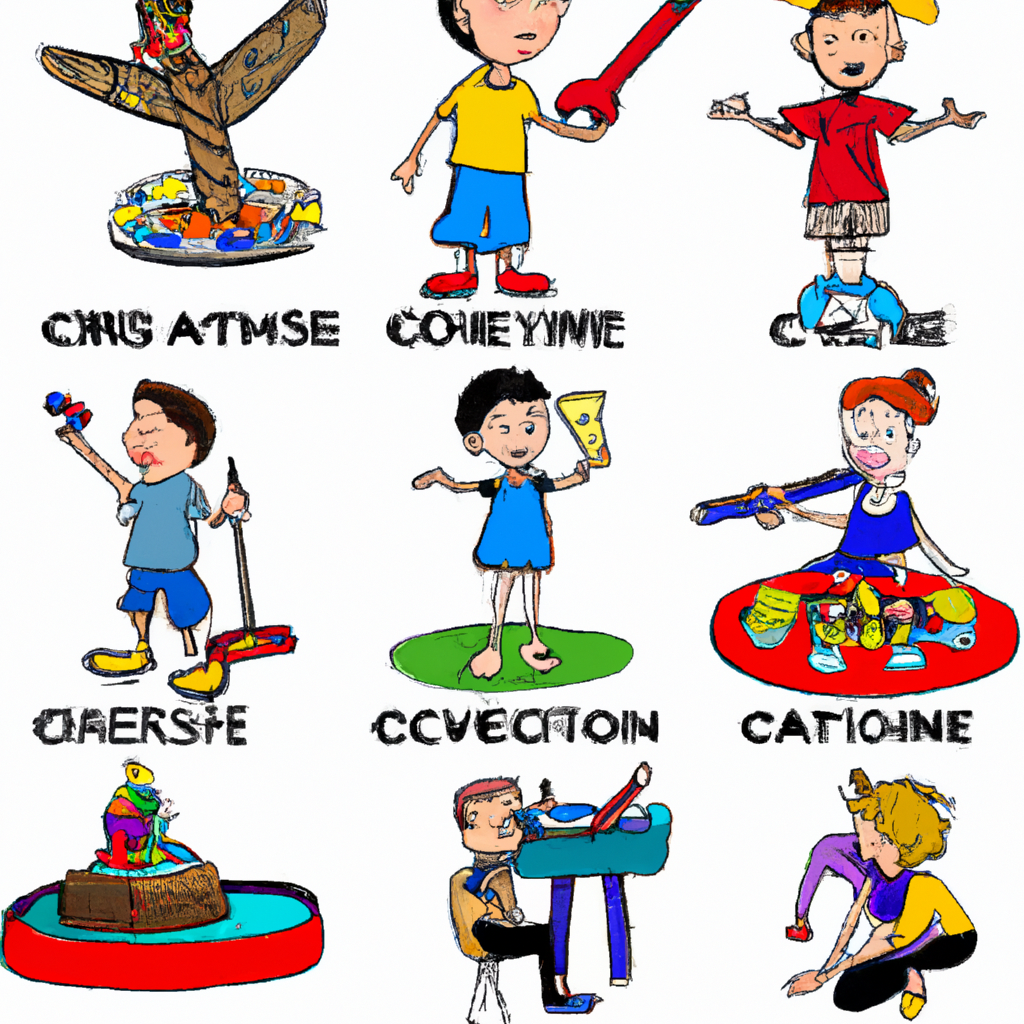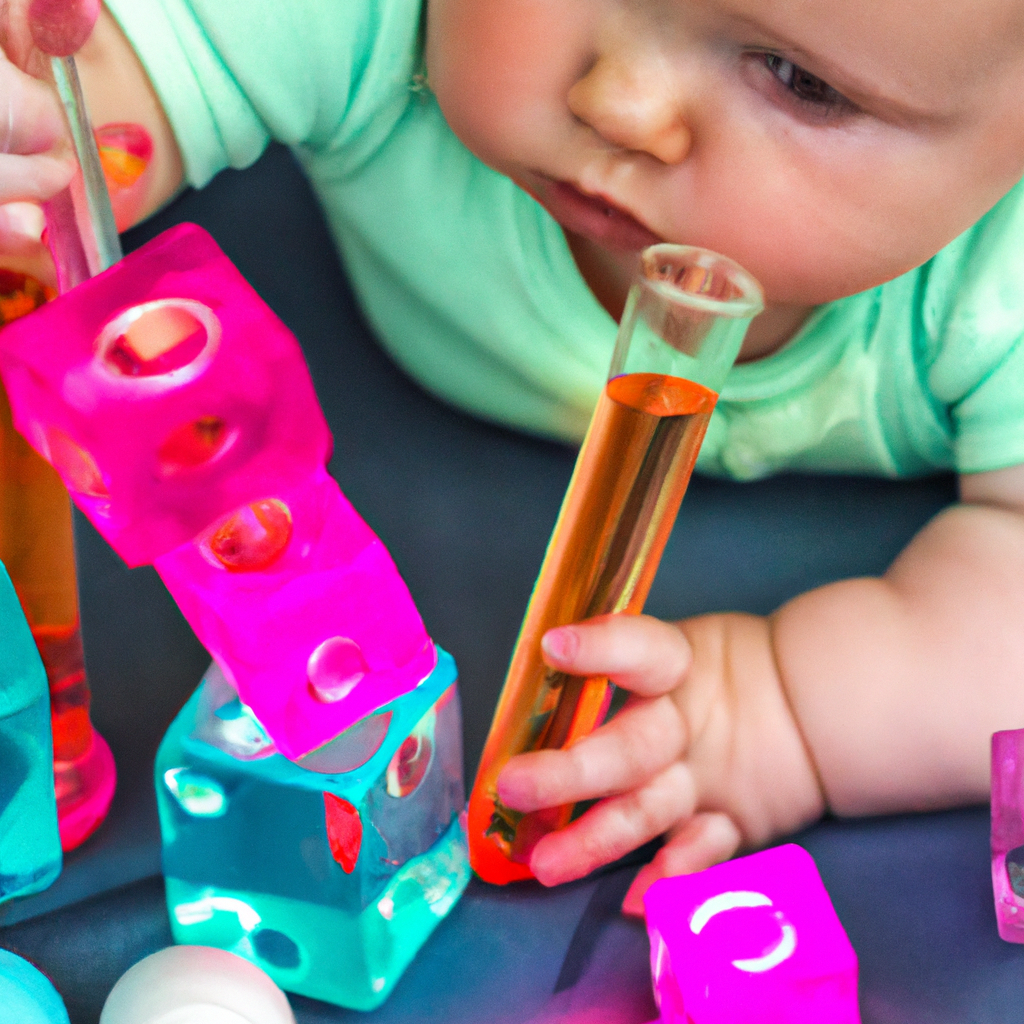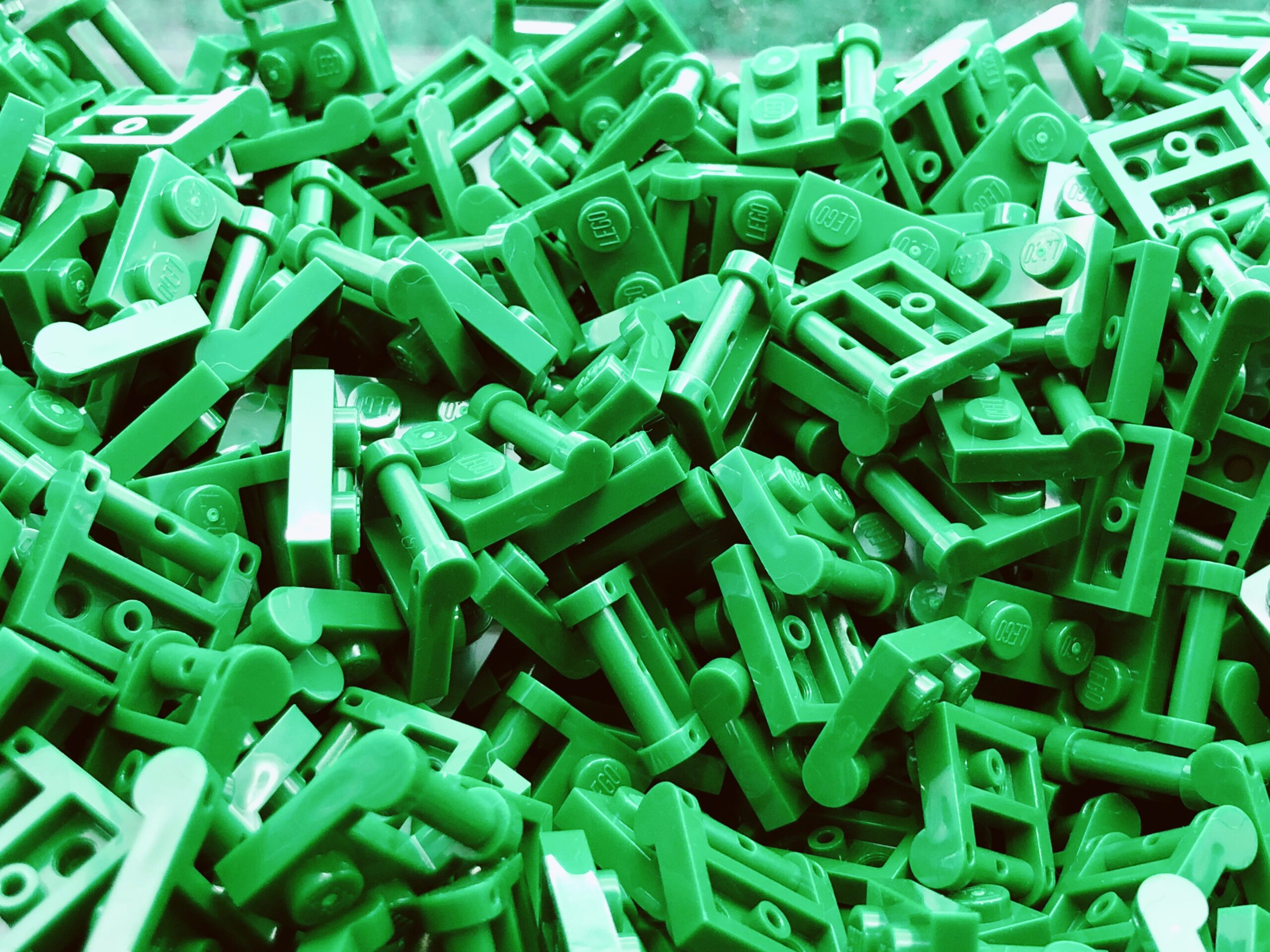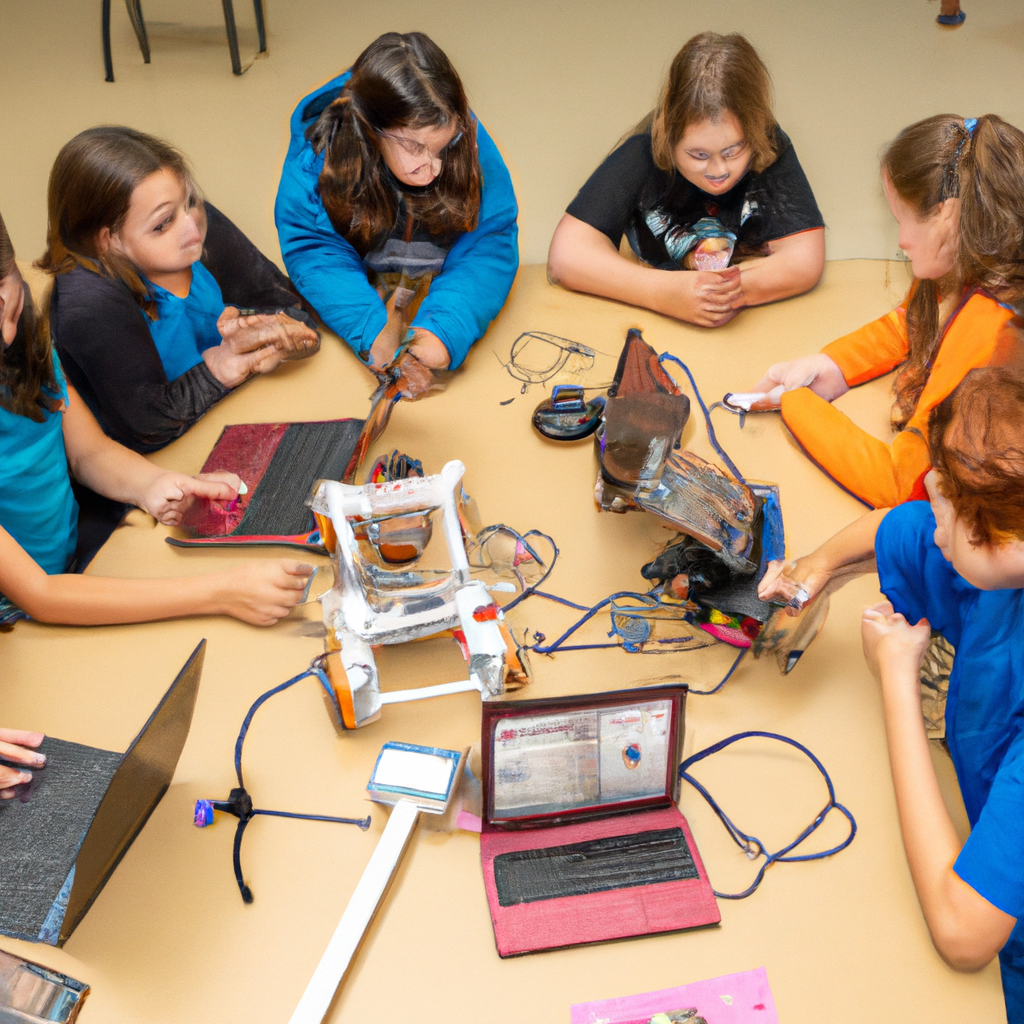Are you wondering about the top toys to help develop STEM skills in 2-year-old toddlers? Look no further! This article will share the best toys to help your little one build a strong foundation in science, technology, engineering, and mathematics.
By incorporating these toys into their playtime, you can nurture their curiosity, problem-solving abilities, and critical thinking skills.
So, let’s dive in and discover the best toys for 2-year-old STEM development!
Key Takeaways
- Early exposure to STEM activities develops critical thinking skills, problem-solving abilities, and curiosity.
- STEM skills are essential in our advancing world.
- Incorporating age-appropriate STEM toys promotes critical thinking, problem-solving, and creativity.
- Science experiment kits foster a love for learning and passion for science.
Importance of STEM Skill Development in Early Childhood
STEM skill development is crucial in early childhood for building a strong foundation for future learning. The importance of early exposure to STEM concepts cannot be overstated. Research has shown that children who are exposed to STEM activities at a young age are more likely to develop critical thinking skills, problem-solving abilities, and a curiosity for the world around them. These early experiences lay the groundwork for a lifelong love of learning and exploration.
Long-term benefits of early STEM exposure are also significant. Children who are exposed to STEM concepts from an early age are more likely to pursue careers in science, technology, engineering, and mathematics later in life. They develop a strong foundation in these subjects, which can lead to increased opportunities and success in the future. Additionally, STEM skills are becoming increasingly important in our rapidly advancing world. By fostering these skills early on, we are equipping children with the tools they need to thrive in an ever-changing society.
Understanding the developmental needs of 2-year-olds is essential when it comes to promoting STEM skill development.
Understanding the Developmental Needs of 2 Year Olds
Understanding the developmental needs of 2-year-olds can help parents choose appropriate toys for their child’s growth. At this age, children are going through important developmental milestones that lay the foundation for their future learning. One key area of development is sensory development. Toddlers are exploring the world around them through their senses, and toys that engage their senses can enhance their learning experiences.
During this stage, children are refining their motor skills and hand-eye coordination. Toys that encourage fine motor skills, such as building blocks or puzzles, can help children develop these skills. Additionally, toys that promote language development, such as books or interactive toys, can support their growing communication abilities.
Furthermore, 2-year-olds are beginning to develop problem-solving and critical thinking skills. Toys that encourage imaginative play, like pretend kitchen sets or dolls, can foster creativity and help children learn to think independently.
Understanding these developmental needs can guide parents in selecting toys that not only provide entertainment but also support their child’s growth and learning. By choosing toys that align with their developmental milestones, parents can create an environment that promotes cognitive, physical, and social-emotional development.
Incorporating toys in STEM learning for 2-year-olds offers numerous benefits.
Benefits of Incorporating Toys in STEM Learning
When it comes to the benefits of incorporating toys in STEM learning, two key points to consider are enhanced cognitive development and hands-on learning experiences.
Research has shown that engaging with STEM toys can stimulate critical thinking, problem-solving, and spatial reasoning skills, leading to improved cognitive development.
Additionally, hands-on learning experiences with STEM toys allow children to actively explore and manipulate objects, fostering a deeper understanding of STEM concepts through experiential learning.
Enhanced Cognitive Development
Enhanced cognitive development can be fostered in 2-year-olds through engaging and interactive toys. Research has shown that these toys not only entertain but also provide valuable learning opportunities for young children.
Here are some key ways in which toys can support cognitive development in this age group:
-
Problem-solving: Toys that encourage problem-solving skills, such as puzzles or building blocks, help children develop critical thinking abilities.
-
Memory and concentration: Toys that require memory recall and concentration, like matching games or memory cards, help improve these cognitive skills.
-
Language development: Toys that promote language skills, such as interactive books or talking toys, support vocabulary and communication development.
-
Spatial awareness: Toys that involve spatial awareness, like shape sorters or stacking toys, enhance children’s understanding of space and shapes.
By engaging with these types of toys, 2-year-olds can develop important cognitive skills that lay the foundation for future STEM learning.
Moving from cognitive development to hands-on learning experiences, children can further explore and apply their newfound skills in real-world contexts.
Hands-On Learning Experiences
To fully immerse yourself in hands-on learning experiences, try engaging in activities that involve experimentation and problem-solving. These types of activities not only promote critical thinking skills but also foster a deeper understanding of concepts.
One way to incorporate hands-on learning is through nature exploration. By taking children outdoors, they can observe and interact with the natural world, developing a sense of curiosity and wonder. This encourages them to ask questions, make observations, and engage in scientific exploration.
Another important aspect of hands-on learning is spatial awareness. Activities that involve building, constructing, and manipulating objects can help children develop their spatial reasoning skills, which are crucial for STEM learning.
By incorporating these hands-on experiences, children can actively engage with their environment and develop a solid foundation for STEM learning.
Transition: Now that we have discussed the importance of hands-on learning experiences, let’s move on to the criteria for selecting STEM toys for 2-year-olds.
Criteria for Selecting STEM Toys for 2 Year Olds
When it comes to introducing STEM concepts to young children, it is crucial to choose age-appropriate toys that promote hands-on learning experiences. As a parent or educator, it is important to understand the developmental milestones of a 2-year-old and select toys that align with their cognitive and motor skills.
Age-Appropriate STEM Toys
You can find age-appropriate STEM toys that are perfect for your 2-year-old’s development of STEM skills.
It is important to choose toys that are suitable for their age as they provide several benefits in incorporating toys in STEM learning.
Age-appropriate STEM toys are designed to engage young children in hands-on experiences that promote critical thinking, problem-solving, and creativity.
These toys are specifically tailored to match the developmental stage of a 2-year-old, ensuring that they are able to grasp and explore the concepts of science, technology, engineering, and math in a fun and interactive way.
By incorporating these toys in their playtime, children can develop important skills such as spatial awareness, fine motor skills, and logical thinking.
These age-appropriate STEM toys lay a strong foundation for future learning and prepare children for more complex hands-on learning experiences.
Hands-On Learning Experiences
Engaging in hands-on learning experiences fosters a deeper understanding of STEM concepts. Through sensory exploration and creative expression, children are able to actively engage with their environment and develop crucial skills.
Here are some examples of hands-on learning experiences that promote STEM education:
- Building structures with blocks, encouraging spatial awareness and problem-solving skills.
- Conducting simple science experiments, allowing children to observe cause and effect relationships.
- Creating art using different materials, promoting creativity and critical thinking.
- Designing and building simple machines, fostering engineering skills and logical thinking.
These hands-on activities provide children with the opportunity to explore their surroundings, tap into their curiosity, and develop a solid foundation in STEM.
As we transition to the next topic on building blocks and construction sets for spatial awareness, it is important to recognize the value of hands-on learning in promoting STEM skills.
Building Blocks and Construction Sets for Spatial Awareness
If you want to enhance your child’s spatial awareness, building blocks and construction sets are a great option. These toys not only provide hours of fun, but also help develop important skills such as spatial reasoning and fine motor skills. Spatial reasoning is the ability to understand and manipulate objects in space, which is crucial for activities like puzzle-solving, architecture, and engineering. Fine motor skills, on the other hand, involve the coordination of small muscles, like those in the hands and fingers, and are necessary for tasks like writing and buttoning clothes.
When children play with building blocks and construction sets, they are engaging in hands-on activities that require them to think critically and problem-solve. They learn how to stack blocks to create structures, which helps improve their spatial awareness. Additionally, manipulating the blocks helps develop their fine motor skills as they grasp, hold, and manipulate the pieces.
To give you an idea of the variety of building blocks and construction sets available, here is a table showcasing a few popular options:
| Brand | Age Range | Material | Features |
|---|---|---|---|
| LEGO | 2-5 years | Plastic | Various themes and sizes |
| Melissa & Doug | 2-6 years | Wood | Includes wooden people and vehicles |
| Mega Bloks | 1-5 years | Plastic | Large, easy-to-grip blocks |
| Tegu | 1-8 years | Wood and magnets | Magnetic blocks for added building options |
By providing children with building blocks and construction sets, we are not only encouraging their creativity and imagination, but also fostering their spatial awareness and fine motor skills. These toys lay the foundation for future STEM skills and are an excellent investment in your child’s development.
Transitioning into the subsequent section about puzzle toys for problem-solving skills, it’s important to note that engaging in puzzles can further enhance a child’s cognitive abilities and critical thinking skills.
Puzzle Toys for Problem-Solving Skills
As a child development expert, I’ve conducted extensive research on the benefits of puzzle toys for problem-solving skills.
Puzzle toys not only provide hours of entertainment, but they also offer numerous cognitive benefits.
They help children develop critical thinking skills, improve hand-eye coordination, and enhance their spatial awareness.
Benefits of Puzzle Toys
You can see how puzzle toys can help your 2-year-old develop problem-solving skills. Not only do these toys provide entertainment, but they also offer numerous benefits in terms of problem-solving and cognitive development.
Here are some key advantages of puzzle toys for your little one:
-
Enhancing cognitive skills: Solving puzzles requires critical thinking, logic, and reasoning, which are all essential cognitive skills that your child can develop through play.
-
Boosting fine motor skills: Manipulating puzzle pieces helps improve hand-eye coordination and fine motor skills.
-
Fostering patience and perseverance: Completing a puzzle takes time and effort, teaching your child the value of patience and the rewards of perseverance.
-
Encouraging spatial awareness: Puzzles often require fitting different pieces together, promoting spatial awareness and understanding of shapes and sizes.
By providing your child with puzzle toys, you can support their cognitive development while they have fun.
Now, let’s explore age-appropriate puzzle options for your little one.
Age-Appropriate Puzzle Options
Let’s take a look at some puzzle options that are suitable for your child’s age. Age-appropriate puzzles play a crucial role in developing problem-solving skills in children. These puzzles are designed to challenge their cognitive abilities while providing an enjoyable learning experience. Here are some puzzle options categorized by age range:
| Age Range | Puzzle Options |
|---|---|
| 1-2 years | Chunky wooden puzzles, shape sorters |
| 2-3 years | Jigsaw puzzles with large pieces, peg puzzles |
| 3-4 years | Floor puzzles, matching puzzles |
| 4-5 years | 3D puzzles, number and letter puzzles |
These puzzles not only engage children in critical thinking but also enhance their fine motor skills, hand-eye coordination, and spatial awareness. As they progress through different age ranges, the complexity of the puzzles increases, providing a continuous challenge. Now, let’s explore the fascinating world of magnetic toys for children to discover the wonders of magnetism and attraction.
Magnetic Toys for Exploring Magnetism and Attraction
Magnetic toys offer a fun and hands-on way for 2-year-olds to explore magnetism and attraction. These toys not only entertain but also promote cognitive development and foster a deeper understanding of the principles of magnetism. Here are four key reasons why magnetic exploration is beneficial for young children:
-
Sensory Stimulation: Magnetic toys engage multiple senses, allowing children to touch, manipulate, and feel the magnetic forces at work. This sensory stimulation enhances their overall learning experience.
-
Problem-Solving Skills: Through magnetic play, children learn to problem-solve as they experiment with different combinations of magnets and observe the outcomes. This helps develop their critical thinking and logical reasoning abilities.
-
Fine Motor Development: Handling small magnets and attaching them to various surfaces requires precise hand-eye coordination and fine motor skills. Magnetic toys help strengthen these skills, which are essential for later writing and drawing.
-
Conceptual Understanding: By playing with magnets, children develop an intuitive understanding of basic magnetic concepts, such as attraction and repulsion. This early exposure lays the foundation for future science learning.
As children progress in their magnetic exploration, they can further expand their hands-on learning with science experiment kits.
Science Experiment Kits for Hands-On Learning
As you explore different science experiment kits, you’ll find a wide range of hands-on learning opportunities that spark curiosity and deepen understanding. Science experiment kits are a fantastic way to engage children in STEM (Science, Technology, Engineering, and Mathematics) skill development from an early age. These kits provide a hands-on approach to learning, allowing children to actively participate in experiments and explore scientific concepts.
Science experiment kits come in various themes, covering topics such as chemistry, physics, biology, and astronomy. They include materials, equipment, and detailed instructions to conduct experiments. By following the instructions and conducting the experiments, children not only learn scientific principles but also develop critical thinking, problem-solving, and analytical skills.
Moreover, science experiment kits promote creativity and imagination. Children are encouraged to ask questions, make predictions, and draw conclusions based on their observations. They learn to think critically and develop a scientific mindset.
In addition to the cognitive benefits, science experiment kits also foster a love for learning and a passion for science. By engaging in hands-on experiments, children experience the excitement of discovery and develop a lifelong interest in STEM subjects.
Transitioning to the next section, coding toys for introduction to basic programming concepts provide another avenue for hands-on learning and skill development in STEM subjects.
Coding Toys for Introduction to Basic Programming Concepts
If you’re interested in learning basic programming concepts, coding toys provide an interactive and hands-on way to get started. These toys are designed to introduce children to coding concepts and help them develop early programming skills in a fun and engaging manner.
Here are three coding toys that can assist in building a solid foundation in coding:
-
Robot Kits: Robot kits allow children to build and program their own robots. They provide an excellent opportunity to learn coding concepts such as sequencing, loops, and conditionals. By coding the robot’s movements and actions, children can understand the logic behind programming instructions.
-
Coding Board Games: Coding board games are a great way to introduce coding concepts to young children. These games often involve problem-solving and critical thinking skills, as players navigate through challenges and puzzles using coding instructions. They provide a collaborative and enjoyable learning experience.
-
Coding Apps: There are numerous coding apps available that are specifically designed for young children. These apps offer a wide range of coding activities and games that teach coding concepts through interactive and visual programming interfaces. They can be easily accessed on smartphones or tablets, making them convenient for learning on the go.
By exploring coding toys, children can start developing a solid understanding of coding concepts and enhance their early programming skills. These toys lay the foundation for more advanced coding and engineering concepts, making them an excellent starting point for young learners.
In the next section, we will discuss engineering toys for building and designing, further expanding on the STEM learning journey.
Engineering Toys for Building and Designing
Robot kits and coding board games are popular options for introducing children to engineering concepts and fostering their creativity and problem-solving skills. However, when it comes to building and designing, there are a variety of engineering toys that can provide a hands-on experience for young minds. These toys allow children to explore and manipulate different building blocks, developing their engineering skills in a fun and interactive way.
Here is a table showcasing some of the top engineering toys for building and designing:
| Toy | Description |
|---|---|
| LEGO Technic | Allows children to build complex, functional structures |
| K’NEX | Offers a variety of building pieces for creative designs |
| Tinkering Labs | Provides a range of building challenges and open-ended play |
| Marble Run | Promotes problem-solving and critical thinking skills |
These engineering toys not only engage children in hands-on building activities but also encourage them to think critically, solve problems, and unleash their creativity. By playing with these toys, children develop important engineering skills such as spatial reasoning, logical thinking, and understanding of cause and effect.
Transitioning into the subsequent section about math toys for number recognition and counting skills, it is important to provide children with a well-rounded educational experience.
Math Toys for Number Recognition and Counting Skills
When it comes to developing number recognition and counting skills, hands-on toys can be incredibly effective. These toys allow children to physically interact with numbers, helping them to understand concepts like addition and subtraction in a fun and engaging way.
Through play, children can develop a strong foundation in math that will benefit them throughout their education and beyond.
Counting With Hands-On Toys
You can encourage your 2-year-old’s counting skills by using hands-on toys. Counting is an important math skill that lays the foundation for future learning. By engaging in hands-on activities, children not only develop their counting skills but also enhance their sensory development.
Here are some ways to incorporate hands-on toys for counting:
-
Sorting toys: Encourage your child to sort objects by color, shape, or size, and count each group.
-
Number puzzles: Introduce number puzzles that require your child to match the numeral with the corresponding number of objects.
Number Recognition Through Play
One way to foster number recognition in your child is through engaging play activities. By incorporating number recognition activities and math learning games into playtime, you can make learning fun and interactive. Here are three examples of play activities that can help develop your child’s number recognition skills:
| Activity | Description | Skills Developed |
|---|---|---|
| Number Hunt | Hide number cards around the house and have your child find them. | Number recognition, visual discrimination |
| Counting with Toys | Use toys like blocks or cars to practice counting and recognizing numbers. | Counting, number recognition |
| Number Bingo | Play a game of bingo using numbers instead of letters. | Number recognition, listening skills |
These activities not only engage your child’s cognitive abilities but also enhance their problem-solving skills and attention span. By incorporating these play activities, you can create a stimulating learning environment for your child. Next, let’s explore music toys for exploring rhythm and sound.
Music Toys for Exploring Rhythm and Sound
Music toys are great for helping 2 year olds explore rhythm and sound. As a developmental expert, I have conducted extensive research on the benefits of music exploration and sound development in early childhood. Here are three examples of music toys that can aid in this crucial stage of development:
-
Musical Instruments Set: This set includes a variety of instruments such as drums, xylophone, and maracas. It allows children to experiment with different sounds and rhythms, fostering their creativity and fine motor skills.
-
Musical Activity Cube: This interactive toy features buttons, knobs, and switches that produce different melodies and sound effects. It promotes hand-eye coordination and cognitive skills while introducing children to the concept of cause and effect.
-
Singing Plush Toys: These adorable stuffed animals play music and sing songs when squeezed. They not only provide entertainment but also encourage language development and sensory exploration.
By engaging with these music toys, 2 year olds can enhance their auditory perception, coordination, and cognitive abilities. Music exploration at this age lays the foundation for future musical understanding and appreciation.
Now, let’s move on to the next section about outdoor STEM toys for nature exploration and sensory development.
Outdoor STEM Toys for Nature Exploration and Sensory Development
Outdoor STEM toys can provide children with opportunities to explore nature and develop their senses. These nature-inspired toys not only promote a love for the outdoors but also engage children in hands-on learning experiences. Sensory play toys, in particular, can enhance a child’s cognitive, physical, and emotional development.
One example of a sensory play toy is the Nature Exploration Kit. This kit includes tools such as a magnifying glass, binoculars, and a compass, allowing children to observe and investigate the natural world around them. Another option is the Sensory Garden Kit, which includes seeds, soil, and plant pots for children to create their own miniature garden. This activity stimulates their senses and teaches them about plant growth and care.
Table: Examples of Outdoor STEM Toys for Nature Exploration and Sensory Development
| Toy Name | Description | Age Range |
|---|---|---|
| Nature Exploration Kit | Includes tools like a magnifying glass, binoculars, and a compass for observing and investigating. | 3-6 years |
| Sensory Garden Kit | Includes seeds, soil, and plant pots for creating a sensory garden, promoting sensory exploration. | 2-5 years |
| Bug Catcher Set | Includes a bug-catching net, magnifying jar, and field guide, encouraging exploration of insects. | 4-8 years |
| Water Table | Features water play activities, such as pouring and splashing, to enhance sensory and motor skills. | 2-6 years |
| Outdoor Science Lab | Includes experiments and tools for exploring scientific concepts, fostering curiosity and discovery. | 5-10 years |
Role-Play Toys for Imaginative Play and Social-Emotional Development
Engaging in imaginative play with role-play toys can enhance children’s social-emotional development. It allows them to explore different roles and express their emotions in a safe and creative way. Role-play toys offer children the opportunity to step into the shoes of different characters and engage in pretend scenarios. This can have a positive impact on their social skills.
Here are three ways in which role-play toys can promote social-emotional development:
-
Empathy: When children engage in imaginative play, they have the opportunity to see things from different perspectives. They learn to understand and empathize with the thoughts and feelings of others. This helps them develop their emotional intelligence and enhances their ability to relate to others.
-
Cooperation: Role-play toys often involve playing with others, which encourages children to work together and cooperate. They learn to take turns, share responsibilities, and communicate effectively to achieve a common goal. These skills are essential for successful social interactions and building positive relationships.
-
Emotional Expression: Imaginative play allows children to freely express their emotions in a safe and creative way. They learn to identify and manage their own emotions, as well as understand the emotions of others. This helps them develop emotional regulation skills and improves their overall social-emotional well-being.
Frequently Asked Questions
Are There Any Safety Concerns When It Comes to STEM Toys for 2-Year-Olds?
When it comes to STEM toys for 2-year-olds, safety concerns are definitely important to consider.
At this age, children are still exploring and discovering their world, so it’s crucial to choose toys that are age-appropriate and free from potential hazards.
Look for toys that have been tested and certified for safety standards. Avoid small parts that could pose a choking hazard and ensure that the materials used are non-toxic.
Always supervise playtime to ensure the child’s safety.
Can STEM Toys for 2-Year-Olds Help Improve Their Language Skills?
STEM toys for 2-year-olds can have a positive impact on their cognitive development. While these toys primarily focus on building STEM skills, they also indirectly contribute to language development through play.
Play is a crucial aspect of language development for 2-year-olds, as it helps them learn new words, practice communication, and understand cause and effect relationships. Therefore, incorporating STEM toys into playtime can provide a fun and educational way for toddlers to enhance their language skills.
How Can Parents Encourage Their 2-Year-Olds to Engage With STEM Toys?
To encourage my 2-year-old to engage with STEM toys, I believe parental involvement is key.
I strive to create a STEM learning environment at home by introducing age-appropriate toys, such as building blocks and simple puzzles, that promote problem-solving and critical thinking skills.
I also actively participate in playtime, guiding my child’s exploration and asking open-ended questions that stimulate their curiosity.
Are There Any Specific STEM Toys That Can Enhance Fine Motor Skills in 2-Year-Olds?
When it comes to enhancing fine motor skills in 2-year-olds, there are specific STEM toys that can be incredibly beneficial.
These toys are designed to engage young minds while also encouraging the development of fine motor skills. By manipulating pieces, building structures, and exploring cause and effect, children can strengthen their hand-eye coordination and dexterity.
STEM toys such as building blocks, shape sorters, and puzzles are excellent choices for promoting fine motor development in 2-year-olds.
What Are Some Examples of Outdoor STEM Toys That Can Promote Nature Exploration and Sensory Development in 2-Year-Olds?
Outdoor exploration and sensory development are crucial for the growth and learning of 2-year-olds. Engaging in nature play can foster their curiosity and ignite a love for the world around them.
Some examples of outdoor STEM toys that promote these skills include sensory bins with natural materials, gardening sets for hands-on planting, and bug catchers for observing insects up close.
These toys not only encourage exploration but also enhance sensory awareness and cognitive development in young children.
Conclusion
In conclusion, there are a variety of options to choose from when it comes to the best toys for 2-year-old development of STEM skills. By incorporating toys that focus on spatial awareness, number recognition, rhythm and sound, nature exploration, and imaginative play, parents can provide their little ones with a well-rounded STEM learning experience.
These toys not only entertain but also engage young minds in critical thinking, problem-solving, and creativity. As Albert Einstein once said, “Play is the highest form of research.” So let’s inspire our little scientists and engineers through play and watch their STEM skills flourish.
With a background in early childhood education and a genuine enthusiasm for fostering learning through play, Ava’s writing transcends the mundane and transforms into a beacon of inspiration for our readers. Her dedication to understanding the intricacies of Montessori, Preschool, STEM, and Waldorf philosophies enriches her content with a level of authenticity that makes Toddler Ride On Toys a go-to resource.










